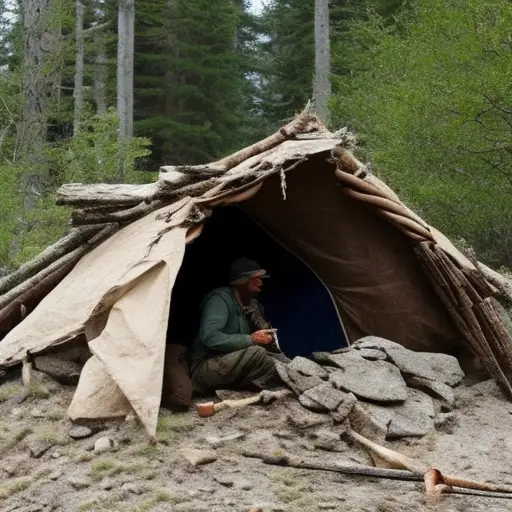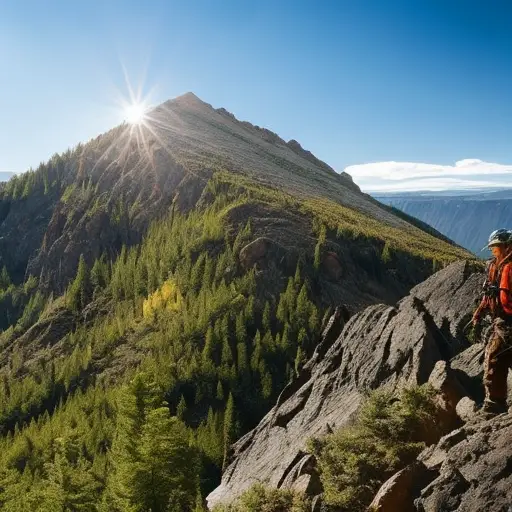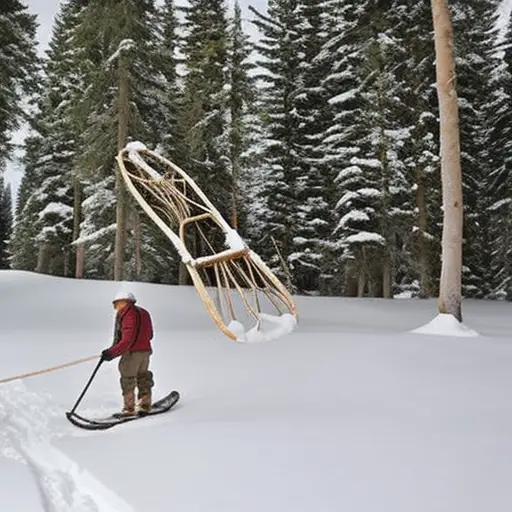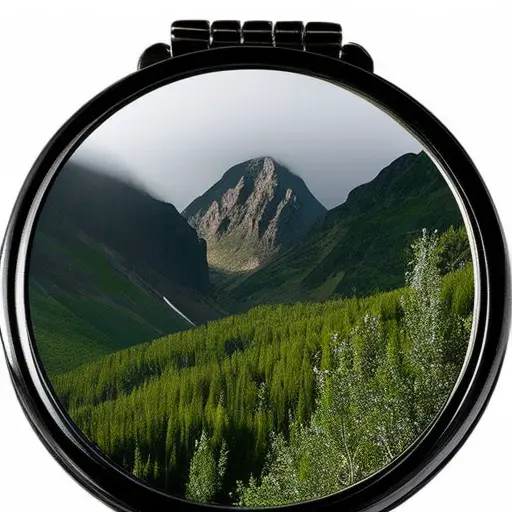DIY Wilderness Gear Hacks for the Resourceful Adventurer

Attention all resourceful adventurers! Are you tired of spending a fortune on wilderness gear? Look no further, as this article provides you with DIY wilderness gear hacks that will save you both money and time.
Imagine being able to create your own water filtration system, fashion a backpack from scratch, and master fire starting techniques without relying on expensive equipment.
Whether you’re an experienced explorer or a novice adventurer, these practical and informative hacks will transform your outdoor experience.
Get ready to unleash your inner MacGyver and conquer the wild!
Water Filtration Hack
One effective water filtration hack for the resourceful adventurer is to create a DIY charcoal filter. When out in the wilderness, access to clean water is crucial for survival. However, finding safe drinking water can be challenging. Thankfully, there are DIY water purification methods that can be easily implemented, such as homemade water filters.
To create a DIY charcoal filter, you will need a few materials. Start with a container, preferably with a small hole at the bottom for the filtered water to pass through. Layer the container with various materials, starting with a layer of small rocks or gravel at the bottom. Next, add a layer of sand, followed by a layer of activated charcoal. Finally, top it off with a layer of fine cloth or coffee filters to prevent any particles from passing through.
As water passes through this homemade filter, the charcoal works to remove impurities and contaminants, leaving you with cleaner, safer water to drink. Charcoal has excellent absorbent properties, capable of trapping chemicals, bacteria, and other harmful substances.
DIY Backpack Creation
When it comes to backpacking in the wilderness, having a reliable and well-designed backpack is essential.
In this discussion, we will explore creative alternatives to traditional backpacks, such as repurposing materials to create functional and durable packs.
Additionally, we will delve into the importance of lightweight backpack design for the resourceful adventurer seeking to optimize their experience in the great outdoors.
Creative Backpack Alternatives
For the resourceful adventurer, a myriad of creative backpack alternatives can be crafted using readily available materials. When it comes to innovative camping gear, a DIY backpack creation can be both practical and cost-effective.
One option is to repurpose an old duffel bag or sturdy tote by adding straps and compartments for organization.
Another option is to use a waterproof tarp or heavy-duty fabric to create a lightweight, minimalist backpack.
Additionally, incorporating DIY sleeping pad alternatives can further enhance the backpacking experience. For instance, using closed-cell foam or inflatable pool floats can provide insulation and comfort during sleep.
These DIY solutions not only save money, but they also allow adventurers to customize their gear to fit their specific needs.
With a little creativity and resourcefulness, the possibilities for backpack alternatives are endless.
Repurposing Materials for Backpacks
To continue exploring creative backpack alternatives, repurposing materials becomes an ingenious approach for DIY backpack creation in the wilderness. When it comes to repurposing materials for backpacks, there are several options to consider.
For example, old tents can be transformed into durable and waterproof backpacks with some sewing skills and creativity. By repurposing the fabric and straps from the tent, you can create a lightweight and functional backpack that is perfect for your wilderness adventures.
Additionally, it is possible to repurpose materials for DIY wilderness cooking utensils. For instance, using an old tin can as a cooking pot or fashioning a spoon out of a sturdy piece of wood can help you save space and weight in your backpack.
Now, let’s delve into the next section and explore the exciting world of lightweight backpack design.
Lightweight Backpack Design
What are the key considerations for creating a lightweight backpack through DIY design? When it comes to ultralight backpacking, every ounce matters. Here are some important factors to consider when creating your own lightweight backpack:
-
Material Selection:
-
Choose lightweight and durable materials such as ripstop nylon or Dyneema composite fabric.
-
Opt for waterproof materials or use waterproofing techniques like seam sealing or adding a waterproof liner.
-
Streamlined Design:
-
Minimize unnecessary pockets and straps to reduce weight.
-
Use compression straps to secure your gear and keep the backpack compact.
By focusing on lightweight materials and a streamlined design, your DIY backpack can greatly reduce the weight on your back, allowing for a more enjoyable and efficient outdoor experience. With a lightweight backpack, you’ll have more energy to explore and conquer the wilderness.
Now, let’s move on to the next section about shelter improvisation techniques.
Shelter Improvisation Techniques
How can adventurers effectively improvise shelter in the wilderness? When it comes to shelter improvisation techniques, there are several options that resourceful adventurers can explore. One popular method is using improvised tarp shelters. These lightweight and versatile shelters can be easily set up using a tarp, some cordage, and a few stakes. They provide protection from the elements and can be quickly assembled in various configurations to suit different terrains and weather conditions.
Another technique is utilizing natural materials for wilderness shelter. Nature provides an abundance of resources that can be used to construct a shelter. By using branches, leaves, and other natural materials, adventurers can create a shelter that blends in with the environment and provides adequate protection. This technique requires knowledge of the local flora and fauna, as well as some basic survival skills.
To help you understand the different improvisation techniques for shelter, here is a table summarizing the advantages and considerations for improvised tarp shelters and using natural materials:
| Improvised Tarp Shelters | Using Natural Materials for Wilderness Shelter |
|---|---|
| Lightweight and portable | Blends in with the environment |
| Versatile and customizable | Requires knowledge of local resources |
| Provides protection from the elements | Requires basic survival skills |
Fire Starting Tricks
When it comes to starting a fire in the wilderness, having a few tricks up your sleeve can make all the difference.
Friction fire techniques, such as the bow drill or hand drill, can be effective but require practice and skill.
Natural fire starters, like dry leaves or pine needles, can provide a quick and reliable ignition source.
And in emergency situations, options like using a battery and steel wool or a magnifying glass to focus sunlight can be lifesaving.
Friction Fire Techniques
One of the essential skills for the resourceful adventurer is mastering the technique of friction fire, a method of starting a fire using the friction generated by two objects rubbing together. When out in the wilderness without access to modern fire-starting tools, knowing how to create fire using primitive techniques can be a lifesaver.
Here are some key points to consider when it comes to friction fire techniques:
-
Natural Tinder Sources:
-
Birch Bark: This highly flammable material can be easily found and used as an excellent tinder source.
-
Dry Grass: Gather dry grass to create a fluffy tinder bundle that ignites quickly when exposed to a spark or ember.
-
Primitive Fire Making Techniques:
-
Bow Drill: This technique involves using a bow to rotate a spindle against a fireboard, generating friction and creating an ember.
-
Hand Drill: Similar to the bow drill, but instead of a bow, you use your hands to rotate the spindle against the fireboard.
Mastering these primitive fire-making techniques will ensure you have the skills to start a fire even in the most challenging situations.
Now, let’s explore some natural fire starters to further enhance your survival skills.
Natural Fire Starters
Continuing from the previous subtopic on friction fire techniques, an effective way to enhance your fire-starting skills in the wilderness is by utilizing natural fire starters, employing simple yet resourceful tricks.
When it comes to starting a fire, having the right tinder is crucial. While commercially available fire starters are convenient, nature provides us with plenty of alternatives. One of the most common natural tinder alternatives is dry grass, which can easily catch fire and produce a flame. Other options include dried leaves, bark, and pine needles.
Additionally, primitive fire making techniques such as using a bow drill or hand drill can be employed to create friction and generate enough heat to ignite the tinder.
Emergency Fire Options
Building upon the previous discussion on natural fire starters, let’s now explore emergency fire options and fire starting tricks for the resourceful adventurer. When you find yourself in a situation where you need to start a fire quickly, it’s important to have a few tricks up your sleeve.
Here are some fire starting techniques and fire safety tips to keep in mind:
-
Fire Starting Techniques:
-
Carry waterproof matches or a lighter as a backup.
-
Use a fire starter tool, such as a ferro rod or a magnesium fire starter, to create sparks and ignite your tinder.
-
Fire Safety Tips:
-
Clear the area around your fire pit of any flammable material.
-
Keep a bucket of water or sand nearby to extinguish the fire when you’re done.
Navigation Without a Compass
To navigate without a compass in the wilderness, rely on natural landmarks and celestial objects. When you find yourself without a compass, there are alternative methods you can use to determine your direction and navigate through the wilderness. One such method is celestial navigation, where you observe the position of celestial objects to determine your direction. The table below provides a guide on how to use celestial objects for navigation:
| Celestial Object | Finding North | Finding South | Finding East | Finding West |
|---|---|---|---|---|
| Sun | Shadows | Shadows | Sunrise | Sunset |
| Stars | Polaris | Southern Cross | Rising Stars | Setting Stars |
| Moon | Crescent | Crescent | New Moon | Full Moon |
By observing the position of the sun, stars, and moon, you can determine the four cardinal directions. For example, shadows can indicate the direction of the sun, with the shortest shadow pointing towards the west during midday. Polaris, also known as the North Star, can help you find the north direction at night. By using these celestial objects and their positions, you can navigate your way through the wilderness even without a compass.
As you venture into the wilderness, it is crucial to be prepared for emergencies. Transitioning into the subsequent section about ’emergency first aid hacks’, let’s explore how you can be resourceful in providing first aid in the wilderness.
Emergency First Aid Hacks
As we transition from discussing navigation without a compass, it is essential to address the topic of emergency first aid hacks for the resourceful adventurer. When exploring the wilderness, injuries can happen unexpectedly, and being prepared with makeshift solutions can make a significant difference in survival. Here are some practical and resourceful hacks to keep in mind:
-
Improvising Bandages:
-
Use clothing or fabric as a makeshift bandage by tearing it into strips and securing it over a wound.
-
In the absence of adhesive tape, use duct tape or even a clean, strong leaf to hold the bandage in place.
-
Makeshift Splints:
-
In case of a broken bone, stabilize the injured limb by using sturdy branches or trekking poles as splints.
-
Secure the splints with improvised ties such as bandanas, belts, or even strips of clothing.
These improvised techniques may not be as effective as professional medical supplies, but they can provide temporary relief and stability until help arrives.
Remember to prioritize seeking professional medical attention as soon as possible. Being resourceful and prepared for emergencies can make all the difference in a wilderness adventure.
Frequently Asked Questions
What Are Some Alternative Methods for Filtering Water in the Wilderness?
When exploring the wilderness, it is important to have alternative methods for filtering water. Solar distillation and improvised water filters are effective techniques that can be used to ensure a safe and clean water supply.
How Can I Create a Backpack From Scratch Using Basic Materials?
Creating a backpack from scratch using basic materials requires resourcefulness and creativity. Follow a step-by-step guide to make your own DIY backpack, and learn tips for finding and repurposing materials.
What Are Some Creative Ways to Improvise a Shelter in the Wilderness?
When it comes to wilderness survival, having the knowledge and skills to improvise a shelter is crucial. There are various creative ways to create makeshift shelters using natural materials and basic equipment. These improvised shelter ideas are essential for the resourceful adventurer.
Are There Any Tricks to Starting a Fire Without Traditional Fire-Starting Tools?
Alternative fire starting techniques can be invaluable for the resourceful adventurer. From using magnifying glasses and steel wool to creating fire with a bow drill or a soda can, there are unconventional methods to ignite a flame without traditional tools.
How Can I Navigate in the Wilderness Without a Compass?
Navigating in the wilderness without a compass can be challenging, but there are alternative methods available. Using celestial navigation, such as identifying stars and constellations, or finding directions based on natural signs like moss on trees, can help determine your bearings.
Conclusion
In the realm of the resourceful adventurer, the wilderness becomes a playground of endless possibilities. Through ingenious hacks and improvisation techniques, one can navigate, find shelter, create fire, and ensure the safety of oneself and others.
These DIY wilderness gear hacks provide a glimpse into the world of practicality and experience, where knowledge and resourcefulness are the keys to survival. Just as a skilled artist transforms a blank canvas into a masterpiece, the resourceful adventurer transforms the wild into a realm of endless adventure and discovery.





